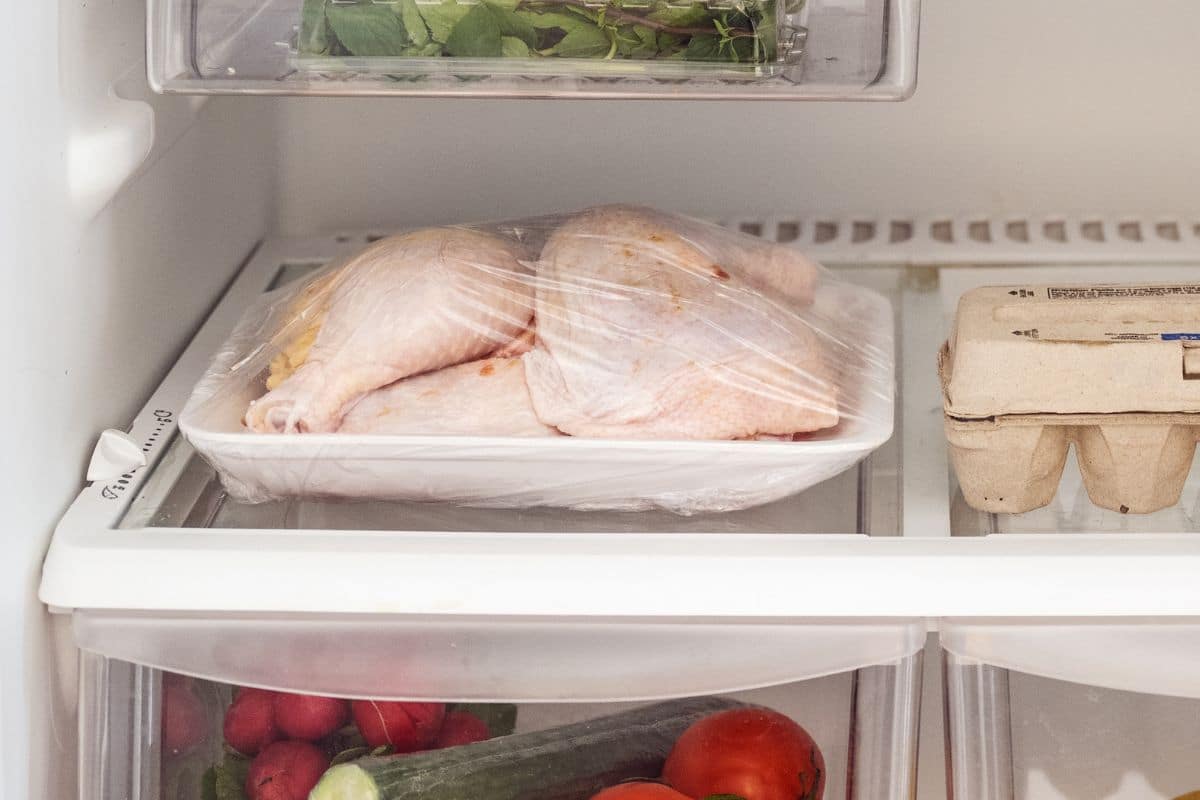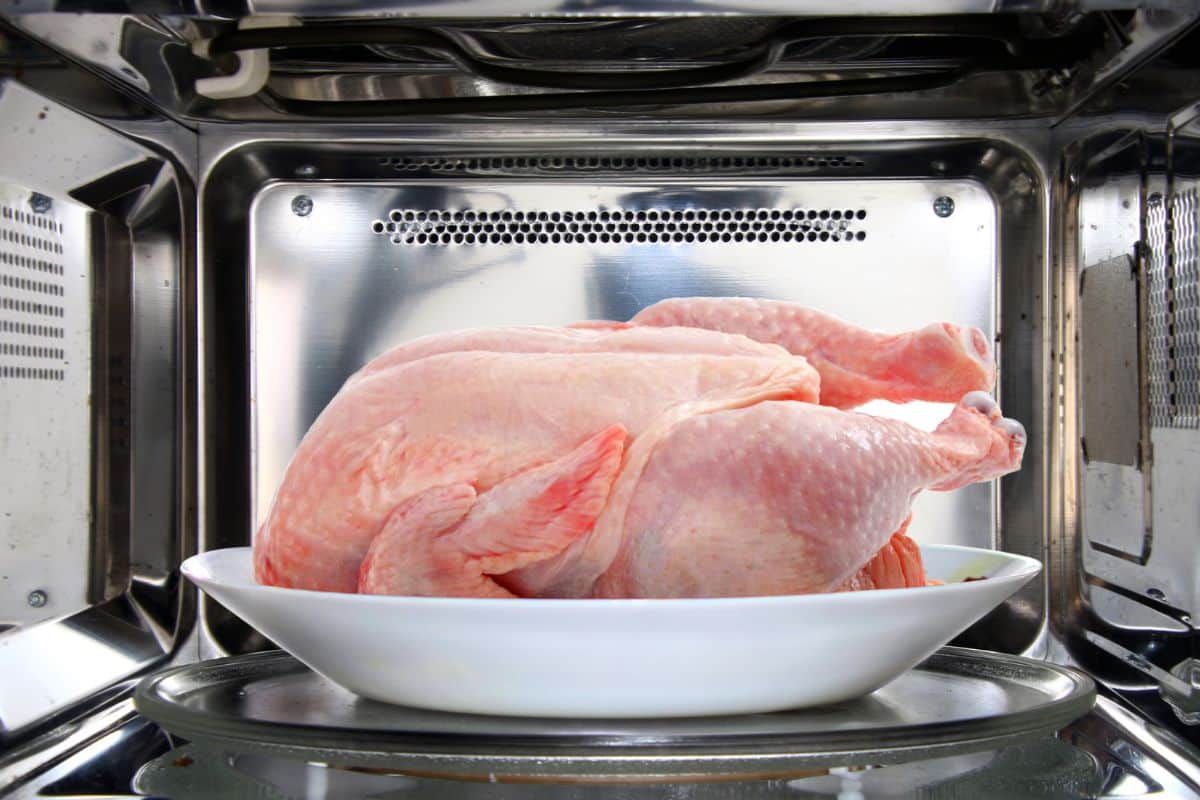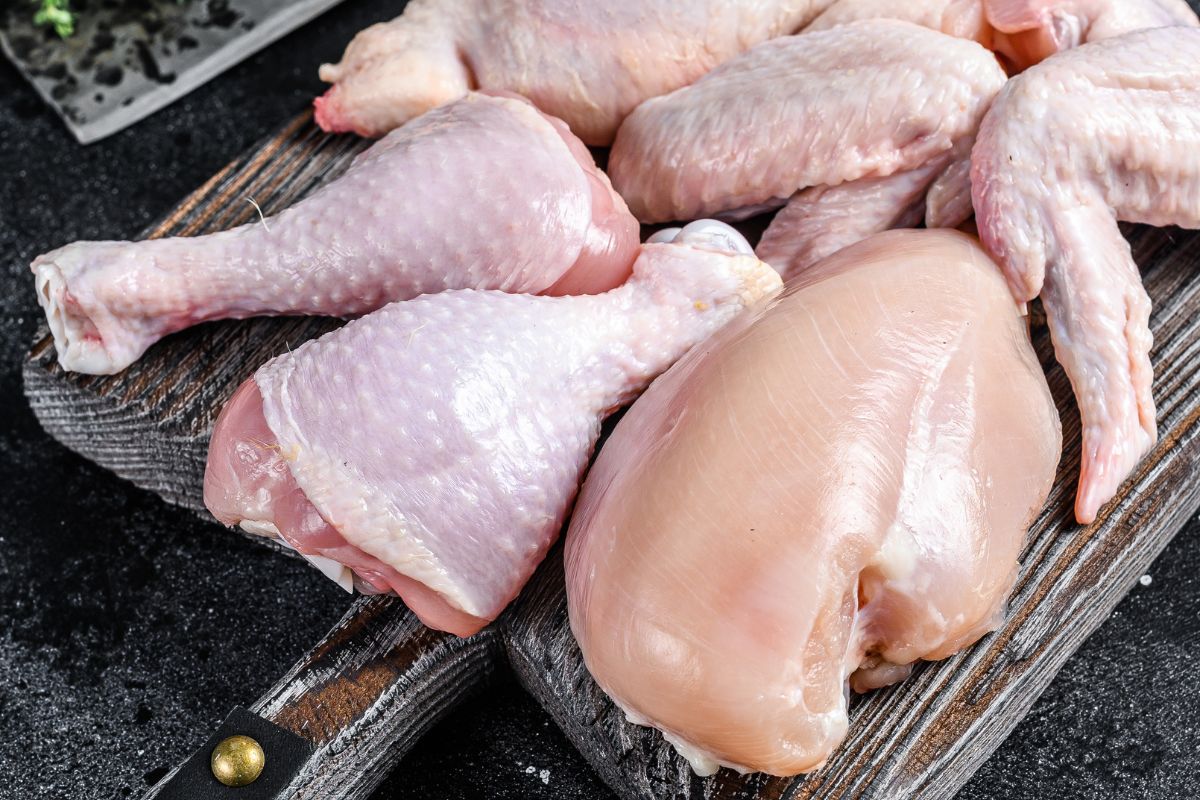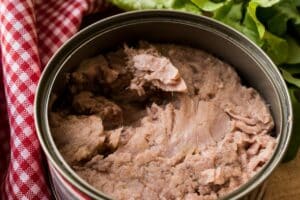Many of us freeze chicken to preserve freshness and avoid waste, but before cooking with chicken, we need to allow it to thaw thoroughly.
If you have any questions about thawing chicken safely or how long you can store it, I will guide you through the process.
Short answer: You can keep thawed chicken in the fridge for one to two days, but I’ll look into this in more detail below.

Why Do You Need To Thaw Chicken?
Most people thaw chicken in the refrigerator, and this is an important step for a few reasons:
- Even Cooking: Thawing chicken ensures that it cooks evenly. When chicken is frozen, the ice crystals can cause the meat to become tough and dry in some areas while undercooked in others.
Thawing allows the chicken to cook more evenly and results in a better texture and flavor.
- Food Safety: Thawing chicken also helps ensure it is cooked to a safe internal temperature. When chicken is frozen, it’s difficult to tell if it has been fully cooked through.
Thawing allows you to visually inspect the chicken and use a meat thermometer to check the internal temperature and ensure that it has been cooked to a safe temperature.
- Easier Preparation: Thawed chicken is also easier to work with than frozen chicken. When chicken is frozen, it can be difficult to season or marinate properly. Thawing the chicken first allows you to season or marinate it evenly and thoroughly.
It’s important to thaw chicken safely to prevent the growth of harmful bacteria. Always follow proper food safety guidelines when thawing, handling, and cooking chicken to reduce the risk of foodborne illness.
How To Thaw Chicken In The Fridge?
Now we know the importance of thawing chicken before cooking, let’s take a look at how to thaw it properly in the fridge:
- Remove the frozen chicken from the freezer and place it in a leak-proof container or a resealable plastic bag. Make sure to label the container or bag with the date of freezing.
- Place the container or bag with the chicken on the bottom shelf of the refrigerator. This ensures that any juices that may leak during the thawing process do not contaminate other food items in the fridge.
- Allow the chicken to thaw in the refrigerator for approximately 24 hours for every 5 pounds of chicken. For example, a 5-pound chicken will take about 24 hours to thaw, while a 10-pound chicken will take about 48 hours.
- Once the chicken is fully thawed, it can stay in the refrigerator for up to 2 days before it needs to be cooked. If you don’t plan on cooking the chicken within 2 days, you can freeze it again.
It’s important to note that thawed chicken should never be refrozen unless it has been cooked first.
Additionally, if you notice any discoloration, unpleasant odor, or sliminess on the chicken, it may be spoiled and should be discarded.
Always follow proper food safety guidelines when handling and storing chicken to prevent foodborne illness.
Other Ways To Thaw Chicken

In addition to thawing chicken in the refrigerator, there are a few other methods that can be used to thaw chicken safely, including:
- Cold water thawing: Place the frozen chicken in a leak-proof bag and submerge it in cold water.
Change the water every 30 minutes to keep it cold. This method can take approximately 1-2 hours for small cuts of chicken or up to several hours for larger cuts or whole chicken.
- Microwave thawing: Use the defrost function on your microwave to thaw the chicken. Be sure to follow the manufacturer’s instructions for your specific microwave.
It’s important to note that this method can cause uneven thawing and may partially cook the chicken, so it’s best to use the chicken immediately after microwaving.
It’s important to avoid using warm water or leaving chicken at room temperature to thaw, as this can promote the growth of harmful bacteria and increase the risk of foodborne illness.
No matter which method you choose to use, it’s important to cook the chicken immediately after thawing to ensure that it is safe to eat.
What Is The Safest Way To Thaw Chicken?
The safest way to thaw chicken is to do so in the refrigerator. This is because the refrigerator keeps the chicken at a safe temperature (below 40°F or 4°C) and allows it to thaw slowly, which reduces the risk of bacterial growth.
Thawing chicken in the refrigerator also prevents cross-contamination with other food items in the fridge.
It’s recommended to place the chicken in a leak-proof container or a resealable plastic bag before placing it in the refrigerator to prevent any juices from contaminating other foods.
Allow approximately 24 hours for every 5 pounds of chicken to thaw fully.
While other methods, such as cold water thawing and microwave thawing, are acceptable, they are not as safe as thawing in the refrigerator.
Cold water thawing requires constant monitoring and changing of water to maintain a safe temperature, while microwave thawing can cause uneven thawing and can partially cook the chicken, which can increase the risk of foodborne illness.
How To Check If Chicken Is Fully Thawed?

To check if a chicken is fully thawed, there are a few different methods you can use:
- Touch: Press the chicken with your finger. If it feels soft and there is no ice or hardness in the center, it is likely fully thawed.
- Bend: Try to bend the chicken. If it is flexible and doesn’t resist, it is probably thawed.
- Cut: Use a clean knife to cut into the chicken. If there is no ice or hardness in the center, it is fully thawed.
How Long Can Thawed Chicken Stay In The Fridge?
Thawed chicken can be stored in the fridge for up to 2 days before it needs to be cooked.
I’d recommend only taking the chicken out to thaw when you know you have a meal planned in the next one to two days that will use it up.
It’s important to note that once the chicken is thawed, it should never be refrozen unless it has been cooked first.
If you’re unsure about whether or not the thawed chicken is still safe to eat, you can perform a visual and smell test.
If the chicken has a strange or unpleasant odor, or if it looks slimy or discolored, it may have gone bad and should be discarded.
It’s always important to handle and store chicken properly to prevent foodborne illness.
Always follow proper food safety guidelines when thawing, handling, and cooking chicken.
Chicken Safety Considerations
Chicken safety is important. Here are some key safety tips to keep in mind:
- Thawing: As I discussed earlier, it’s important to thaw chicken safely. The best way to do this is to thaw it in the refrigerator.
Alternatively, you can use the cold water method or microwave, but never thaw chicken at room temperature or in warm water, as this can promote the growth of harmful bacteria.
- Handling: When handling raw chicken, it’s important to follow proper hygiene practices.
Always wash your hands with soap and warm water before and after handling chicken, and use separate cutting boards, utensils, and plates for raw chicken and other foods.
- Cooking: Chicken should be cooked thoroughly to a safe internal temperature of 165°F (74°C) to destroy any harmful bacteria that may be present.
Use a meat thermometer to check the internal temperature of the chicken, and avoid eating undercooked or raw chicken.
- Storage: Store raw chicken in the fridge or freezer at the appropriate temperature to prevent the growth of harmful bacteria. Raw chicken should be stored at a temperature below 40°F (4°C) in the fridge and below 0°F (-18°C) in the freezer.
By following these safety tips, you can reduce the risk of foodborne illness when handling and preparing chicken.
Always remember to use common sense and exercise caution when working with raw chicken to ensure the safety of yourself and your loved ones.
Final Thoughts
Chicken is a delicious and versatile protein that can be cooked in a variety of ways.
However, it’s important to handle and prepare chicken safely to prevent the risk of foodborne illness.
Thawing chicken properly is essential for even cooking, food safety, and easier preparation.
You can thaw chicken in the fridge, in cold water, or in the microwave, but the safest method is to thaw it in the fridge.
Frequently Asked Questions
No, for optimal safety, chicken should be cooked within 1 to 2 days after defrosting in the refrigerator according to USDA guidelines.
Yes, if the chicken was defrosted in the refrigerator and it has not been more than 1 to 2 days since defrosting, you can safely put it back in the fridge to cook later within this timeframe.







